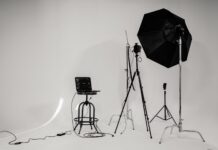Photography is a passion for many people. The only bit of the problem is that they are not well versed with the professional cameras and the various photography techniques. If you want to practice photography as a hobby or passion, it is essential to get accustomed to the basics of photography.
Most of the people look at the newer photography techniques like:
High-speed photography
Night photography
Smoke Art photography
Macro photography
Long exposure photography
The problem with learning such techniques is that they are tough to master unless and until you cover a few basics. Only once you understand the basics of photography, it is easier for you to practice any of these techniques. If you directly try to master these techniques, it will be tough for you to improve your photographic skills.
We will today highlight some of the basics of photography which are essential before you move on to master any technique.
1 Exposure
The word exposure in photography refers to the brightness or the darkness of the photo. You need to capture the pictures with proper exposure. Only when that is the case, it will be easier for you to click the subject in its entirety and also ensure that the photo is perfect. There are three factors which determine the exposure in any photograph. You have to look into these three factors to understand how you can control the camera exposure in any picture.
Aperture
Aperture is the space within the lens from which, the light travels into the camera. You can vary the aperture size as per the brightness which you want to induce in the photograph. The lower the aperture rating, the wider is the hole which ensures that more light enters into the photo. At the same point in time, the higher the aperture rating, the more focused will be the shot. That is why you have to determine the aperture which you want to set before clicking photos.
ISO
ISO is the sensitivity of the camera to the light available. When the ISO number is on the lower side, it indicates that the camera is less sensitive to light. When the ISO number is on the higher side, the camera is more sensitive to light. The problem is that if the camera is more sensitive to light and the amount of light is on the higher side, there will be distortion in the image. That is why you cannot directly assume that the higher ISO rating is right for your photos. You have to vary the ISO rating as per the light available.
Shutter speed
Shutter speed is the speed at which you click the picture. It determines the amount of time for which the camera is exposed to the surrounding. When you capture a high motion subject, fast shutter speed is apt as the photo gets clicked in seconds. Similarly, if you want to create a motion blur effect, you can lower the shutter speed. The shutter speed does not make much of a difference when the subject is entirely stationary. These three factors determine the exposure of your camera. You have to master each one of them to take the perfect photos. Only when you learn these three factors, you can practice many of the advanced techniques of photography.
2 Autofocus Modes
The focusing modes are pretty important when using a camera. You can choose between two options which are the single focus and continuous focus.
Single focus
The single focus mode is the standard mode to capture a photo. However, if the subject is moving around, it is not the perfect mode.
Continuous focus
The continuous focus mode uses multiple autofocus points around the subject. Even if the subject is moving around, you can quickly capture it. Thus, depending on the nature of the subject, you have to choose the autofocus mode, which you can use for your photograph.
3 White Balance
White balance is pretty important while taking any photograph. If the white balance in a picture is not proper, it will change the colors of the image. That is why you have to understand controlling the white balance. It is a good idea to use proper lights to control the white balance. It will allow you to portray the natural colors. If the white balance is not appropriate, the photo might induce yellow or red shades into the image. That is why you have to use the white balance appropriately in the picture. If you rely only on natural light, there are chances that white balance might not be proper. In such a case, you might not capture the colors in the right way. That is why extra lights are a necessity.
4 Metering Modes
If you do not want to control the aperture, shutter speed, and ISO manually, you can use the different metering modes in the camera. It will free you up from choosing every setting manually. As a result, they are chances that you might get a perfect photo without any distortion. When you’re in the metering mode, you will have to choose the settings manually. However, when you’re in the spot metering mode, it is easy for you to take a perfect photo without having to deal with various exposure settings. It will allow you to avoid any overexposure as well. As a result, capturing professional level photograph is hassle-free.

5 The depth of field
One of the main challenges which most of the photographers face when they are getting started in photography is shooting in low light. The problem is that if a single setting is not proper, while shooting in low light, the entire photo will get distorted. When you’re shooting in low light, the first thing which you need to do is to widen the aperture. At the same point in time, when you do so the depth of field is pretty shallow. While shooting indoor subjects, you might not face this hindrance. However, when you’re shooting landscapes and the depth of field is shallow, your photo might not be proper. That is why it is essential for you to understand changing the depth of field.
Some of the tips which you can follow to change the depth of field to your advantage include:
You should choose a higher aperture rating to get a deep depth of field.
You can use a program like a Helicon focus to induce a significant depth of field in your photograph.
Choose telephoto lens in the case; you’re looking for a shallow depth of field.
You should choose the telephoto lens in the case; you’re looking for a shallow depth of field.
You should create distance between yourself and the subject if you’re looking to get a shallow depth of field. These are some of the tips which you can follow when looking to get adequate depth of field in your photograph.
6 Focal Length
Focal length refers to the zooming strength of the lens which you use while taking a photograph. The higher the focal length, the more will be the zoom capacity of your camera lens. The distance which the focal length refers to is the point of convergence in the camera lens and the sensor in the camera. It is not the distance outside. Every lens has a different focal length. You need to choose the lens according to the focal length which you need.
You can choose the 14 MM to 24 MM lens when you’re looking for an ultra-wide angle of view.
You can select the 24 MM to 35 MM lens when you’re looking for a wide angle of view.
If you’re looking for a standard viewing angle, you can choose a lens between 35 MM to 70 MM.
If you’re looking for the telephoto effect, you can select the camera lens with the focal length of 105 MM to 300 MM. The focal length of the image primarily provides the illusion of different scales of distance between the subject and the surroundings. That is why you have to choose the lens with the right focal lens to capture the subject in its entirety.
7 Resolution
The higher the camera resolution, the better the intricate details it can capture. PPI is the unit used to measure resolution. You always have to choose the camera with the highest resolution. It will allow you to click the smaller details of the picture quite vividly. It will be a lot easier for you to take HD quality photos. You can quickly zoom these photos to view the intricate details of the images as well. That is why, when choosing the lens of the camera, it is essential to understand the maximum resolution which it can support.
8 Image file formats
You have to keep in mind that when taking photographs, you might have to transmit them to your client or you might have to upload them online. While transferring the pictures or uploading them, the image file format plays a vital role.
Some of the options which you have are:
JPEG: It provides a compression ratio of 10:1 to 20:1. However, there is some loss of image quality during compression.
TIFF: TIFF image format is the best option when you want to capture every detail. The size of these images can be pretty large at over 40 MB per image.
RAW: The RAW image format refers to the original core image which has been taken by the camera. You need to convert it into any of the above two image formats to view that image. These make it difficult for you to modify the image. However, when it is in this format, you can edit and process the image quite efficiently.
It is a good idea to select the image format in advance so that you get the photographs precisely in the form which you prefer.
9 Lenses
The variations of lenses available these days are plenty. You have to always look at a few factors while choosing your camera lens. Some of these factors are:
Focal length
Aperture
Compatibility with your camera sensor
Budget
Lenses can cost anywhere from $100 all the way up to $2000 as well. A lot depends on the exact specifications which you. When you choose the specifications of the lens according to the guide, it will be easier for you to purchase the right one. That is why you always have to take these few factors into account and then choose the lens for your camera.
10 Camera flash
The camera flash can be of two types. You can use the pop-up flash, or you can use the built-in flash. There are dedicated pop-up flashes available as well. The kind of camera flash which you use will always be dependent on the other light sources which you use along with the natural lighting conditions.
Some of the flash types which you need to choose are:
Macro camera flash: It is suitable for providing diffused light when you want to take the photograph of the subject at a close range.
Hammerhead camera flash: The hammerhead camera flash is often attached to the tripod. It provides high light output and ensures that you can illuminate the entire photo rather than just a narrow area. It also limits the red-eye effect in subjects. Hence, it is common in various events and parties.
Fill-In flash: The fill-in flash is a technique which is utilized by photographers. It is not a separate flash. If the ambient light is on the higher side, this is the preferred technique. It balances the photograph and makes it more aesthetically pleasing.
When you want to opt for various flash options which you can use, it is essential to consider these three flash options. You can use the flash option as per the subject which you wish to capture.
So, before moving on to any of the advanced photographic techniques, it is essential to understand the basics of photography. The ten factors which we highlighted above will help you to improve your photography skills and capture the subject as per your requirement. You have to master all the ten factors which we have discussed above to ensure that you can take professional level photographs with the little to no distortion.




































